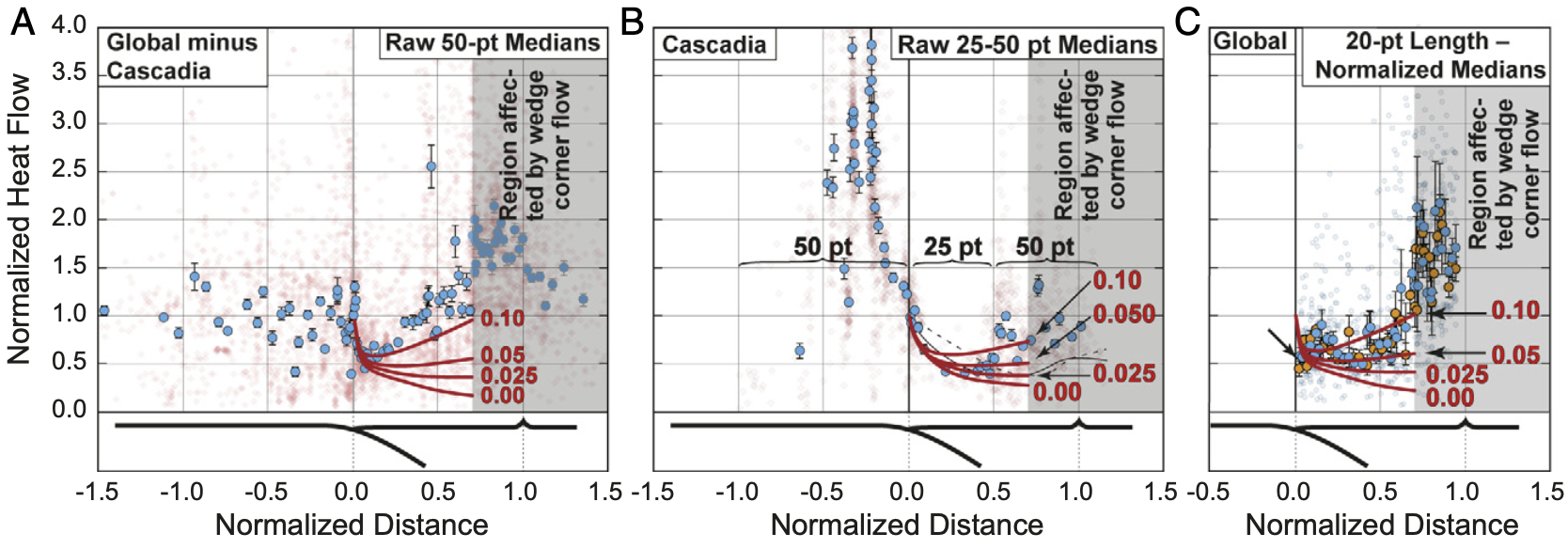Shear heating reconciles thermal models with the metamorphic rock record
Thermal structure influences many aspects of subduction zone metamorphism, rheology, and melting. Most thermal models assume small or negligible friction coefficients and underpredict the pressure–temperature (P–T) conditions recorded by subduction zone metamorphic rocks by hundreds of degrees Celsius. Incorporating shear heating into these models allows for simultaneous reproduction of surface heat flow and the P–T conditions of exhumed metamorphic rocks. Because hot, dry rocks possess greater density than cold, wet ones, young-hot subduction systems produce rocks with lower buoyancy and greater difficulty of exhumation. Consequently, the metamorphic record may underrepresent young-hot subduction while overrepresenting old-cold subduction.

Figure: Normalized heat flow data vs. normalized distance. Model curves are labeled with assumed apparent coefficients of friction (µ$^*$). Large dots with error bars are medians of binned data and their errors. Gray regions are affected by corner flow and are not considered in this study. (A) Raw data excluding Cascadia. (B) Raw data for Cascadia. (C) All data between normalized distances of 0.02 and 1.0 for well-sampled subduction zones, randomly sampled in proportion to trench length.
Proceedings of the National Academy of Sciences published the manuscript on October 29, 2018. You can find the article here.
Coauthors:
- Matthew Kohn (Boise State University)
- Adrian Castro (Wellesley College)
- César Ranero (Instituto de Ciencias del Mar)
- Frank Spear (Rensselaer Polytechnic Institute)
Acknowledgement
We thank P. Molnar and S. Roecker for comments prior to submission, W. Gosnold and X. Gao for providing the global heat flow database and the slab-top geotherms from numerical models, L. Spaete for help parsing the global heat flow database, and P. Kelemen, T. Gerya, and four anonymous reviewers whose incisive comments helped improve the manuscript substantially. Support was provided by NSF Grants EAR1419865 and OISE1545903 (to M.J.K.), EAR1447468 and EAR1750674 (to F.S.S.), and the Spanish Ministry of Science under “Acción de Programación Conjunta Internacional” Grant PCIN-2015-053 (to C.R.R.).
Open Research
The supporting information published with the online version of this article hosts the datasets, models, and relevant information for reproducing this work doi: 10.1073/pnas.1809962115.